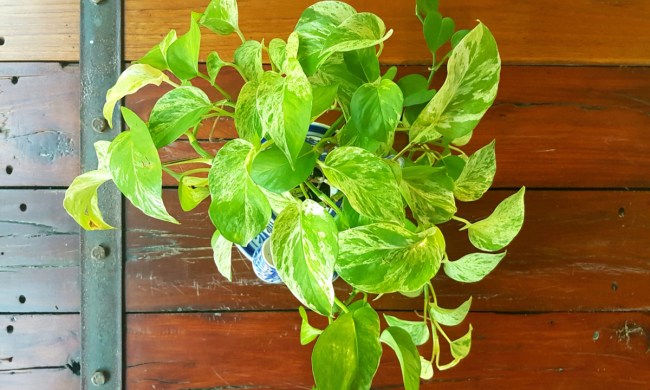Growing edible houseplants indoors is easier than you think! From herbs (like basil and thyme) to vegetables (like ginger and potatoes), there’s a wide variety that can be grown in containers. But are the edible houseplants you can grow indoors able to be grown year-round? And which ones will keep producing a harvest? With the right conditions, many edible houseplants you can grow indoors will survive colder months and give you a nice harvest.
Basil, thyme, and other herbs
One of the most popular indoor gardens that don’t require a lot of high-maintenance work are herb gardens. Some are easier to grow inside than others — like basil, mint, parsley, and thyme — but most every herb can be grown indoors with the right care.
You can start your indoor herb garden in three different ways: With seeds, cuttings, and small plants from a nursery. The third option will be the easiest and fastest to start reaping your rewards from the plants, but you may find it more satisfying to grow them from the seeds. Whichever way you choose, you’ll want to make sure you choose a container that not only fits the plant but is maybe a bit big for the plant. After all, plants grow. And while you can choose a perfect-fit pot, it will mean you’ll have to repot sooner than you like.
The containers you choose should ideally have good drainage with a tray at the bottom to catch any excess water and keep your herbs from sitting in soggy soil. Overwatering could easily be your downfall. That said, there are many indoor herb-garden setups sold, like mason jars, that don’t have any drainage. If you want to use something like that for the look of it, be sure to place a layer of stones at the bottom. They’ll help catch the excess water and give the soil a place to drain.
Coffee plant
“Coffee plants? Like, the plants that grow coffee beans?” Yes, exactly! Although it may take a few years to produce enough beans to for a cup of coffee, you can buy and nurture your own indoor coffee plant to grow your own morning brew.
This one isn’t as instantly gratifying as the herb garden, so keep that in mind when deciding whether or not to take this plant on. You can find young coffee plants in nurseries, and they’re usually a few years off from blooming and producing beans at that point. But growing it to the point of a successful harvest can feel very satisfying in the end — and you’ll get to grind your own homegrown beans!
Caring for your coffee plant
The coffee plant is an edible houseplant that can successfully be grown indoors year-round, provided you have the right conditions. These plants prefer bright, indirect sunlight, making them perfect for floor-plant stands near a window. Like many plants, they don’t withstand temperature below freezing and prefer to be kept in an environment above 65 degrees. To that effect, you’ll want to keep them away from any drafty areas of the home during the winter. This may mean relocating your plant for a few months, or setting up its initial home with that in mind.
These plants also require pots and soil that have good drainage. When watering, you want to make sure the soil stays somewhat moist without getting soaked. To achieve that, it’s best to let the top part of the soil dry out a bit between waterings (without letting the whole pot dry out). Pay attention to how much water drains out the bottoms, too, to help avoid overwatering. You know there’s enough in the pot when it starts to get in the tray.
Chili peppers and other vegetables
Vegetables that can be grown in containers, like chili peppers, also make good edible houseplants that can be grown year-round. Typically, the types of vegetables that do best growing indoors are smaller varieties. They don’t take up as much space, don’t need as much space, and can still provide you with a relatively nice harvest for as long as they’re producing.
Chili peppers specifically (and many other vegetables) require well-lit areas, so keep that in mind when you decide which ones to grow in your home. For the colder months when there is less light, you may need to set up artificial grow lights to help keep them alive and thriving. Luckily, with most vegetables, the care requirements for outdoors versus indoors are roughly the same. If you’re well-versed in outdoor garden growing, the shift to indoor should be no trouble.
As with any container plant, though, you’ll want to be aware of how much you’re watering your peppers and other vegetables. Containers don’t dry out as fast as the ground outside, so watering will require more active attention to avoid overwatering (and underwatering).
With a good mix of herbs, vegetables, and plants that require longer nurturing like the coffee plant, you’ll have an indoor garden that supplies you with crops at many times, in many ways. Having fresh vegetables and herbs in the winter that you’ve grown yourself is very rewarding — and delicious — and you’ll be hooked once you brew your own homegrown cup of coffee.





